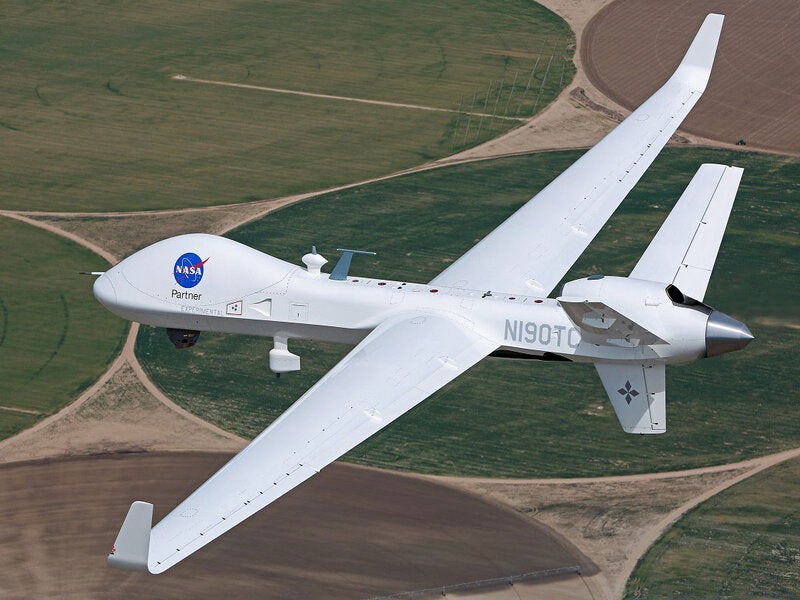
General Atomics Aeronautical Systems (GA‑ASI) flew its SkyGuardian Remotely Piloted Aircraft (RPA) in southern California, US, in a joint flight demonstration with Nasa.
Nasa selected the company to participate in its Systems Integration and Operationalization (SIO) activity.
GA-ASI and Nasa have worked collaboratively since 2014 to prove the safety of flying large UAS in the National Airspace System (NAS).
During the demonstration, a diverse range of applications using SkyGuardian‘s onboard sensors was displayed.
Some of the applications included inspections of hundreds of miles of rail, power line, communication and canal infrastructure, agriculture monitoring, topological surveys, wildfire and flood monitoring.
The demonstration was conducted with technology partners, including Honeywell, Collins Aerospace for the Command and Non-Payload Communications (CNPC) datalink radios, which is part of the Command and Control datalinks system.
How well do you really know your competitors?
Access the most comprehensive Company Profiles on the market, powered by GlobalData. Save hours of research. Gain competitive edge.

Thank you!
Your download email will arrive shortly
Not ready to buy yet? Download a free sample
We are confident about the unique quality of our Company Profiles. However, we want you to make the most beneficial decision for your business, so we offer a free sample that you can download by submitting the below form
By GlobalDataGA-ASI CEO Linden Blue said: “Our work with Nasa is opening the eyes of regulators to the safety and utility of unmanned aircraft systems in the performance of certain tasks for public and commercial good.
“Our airborne sensors can see through thick smoke, enabling us to inform ground personnel about the locations of fire lines so they can deploy resources efficiently.
“The SIO demonstration highlighted how the aircraft can be used for many other civilian and commercial missions.”
The flight took off from GA-ASI’s Gray Butte Flight Operations Facility near Palmdale, California. It was remotely operated by a pilot based at Gray Butte.
GA-ASI-developed Detect and Avoid System (DAAS) was used to provide situational awareness of air traffic near the UAS.
DAAS features an air-to-air, Due Regard Radar that detects and tracks capability of nearby aircraft with or without active transponders.
The system allowed the remote pilot to see and navigate around airborne traffic.







